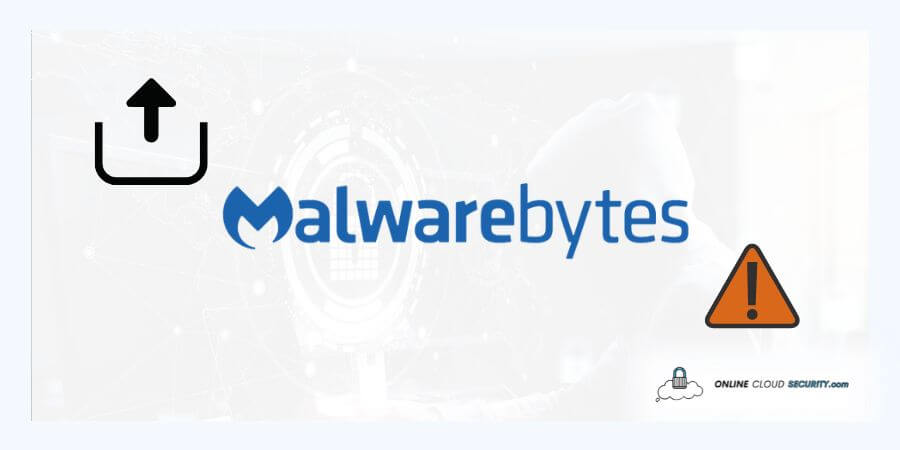
Dave Miller – Tech Enthusiast & Security Expert – November 3rd, 2022

When Anti-malware for Windows encounters a problem like Malwarebytes unable to access the update server, you may be wondering what went wrong. Malwarebytes for Windows frequently check with their servers for new software versions. And it is a good antivirus scanner that delivers real-time security and several layers of malware defense. Still, it must constantly search for new programs, modules, or database versions to do so.
You can manually check for software updates in Malwarebytes for Windows on both the Premium and Free editions. However, you can no longer do so because of this issue. This issue might be taking place for various specific causes, but thankfully, Malwarebytes has given several potential solutions to this issue. All you have to do is choose the one that works best for you.
Continue reading the article to find out what more you’ll need to remedy the problem, or stop reading now and fix it.
Windows users must install an antivirus tool to safeguard their computer from infections, and Malwarebytes is a fantastic choice. Malwarebytes tool can be downloaded for free or have a 14-day trial before purchase. It works by detecting malware by searching a database of recognized malware definitions. Additionally, the application itself receives periodic updates. By using their most recent threat definitions, these procedures guarantee that the software operates without error.
But, it has occasionally get claimed that this program’s users cannot rely on it to provide complete security as it is not a full-featured antivirus program. Because it often runs into problems. Like users, they claimed that the updates for their premium version had ceased.
When users attempt to update manually, it indicates that updates are available. Still, as soon as they click update, they receive the error message ” Malwarebytes unable to access the update server.” Additionally, your PC is vulnerable to attacks because it isn’t upgrading, and you don’t have the most recent threat definition.
Therefore, you may select the following solutions to resolve this problem.
Every software version has a life cycle that ends when users must upgrade to the newest version. Malwarebytes must adapt to the evolving requirements for cyber security. However, users frequently utilize outdated versions because they lack a sense of change. According to the date listed on the Malwarebytes Anti-Malware Product Lifecycle website, MBAM v2.2.1, the most recent version of Malwarebytes, they officially reached end-of-life on June 8, 2017. On an as-needed basis, Malwarebytes does issue bug patches, stability enhancements, and other updates for the earlier versions and platforms. But at this point, they halted.
So, customers of this outdated software were getting frequent updates to the virus definitions. Therefore, after May 19, 2022, there will be no definition revisions. For them, everything was OK. Since then, users must upgrade to a newer version of Malwarebytes because it no longer receives definition updates.
An official from Malwarebytes mentioned on the forum that this occurred because all of their existing software needs to update a recent build certificate. The new certificate cannot get added to earlier versions of the program. The Malwarebytes software is not the problem in this case; if you have a license and wish to keep using Malwarebytes, you must use a newer version of the product. It is because all users get made aware of this problem before they approach the End of Life.
Sometimes software bugs make you re-install a whole new fresh copy. Similarly, you will need to re-install it by first removing Malwarebytes with the clean tool. And then re-installing it using an administrator account.
For this, The Malwarebytes Support Tool troubleshoots, repairs, and resolves issues with Malwarebytes for Windows. So, if you are having a problem with Malwarebytes, the first step should be to use the Malwarebytes Support Tool to uninstall and re-install Malwarebytes. It comes with various options for your support, but you will need the one labeled the advanced Clean option.
All Malwarebytes files and prior setting settings will get deleted if you choose this option. The default settings may now get used to re-install Malwarebytes for Windows. Accept the re-install option when it appears to bring up the installation window with a loading bar. The Malwarebytes application launches upon installation.
You can follow the complete guide on using this tool from the Malwarebytes official website, which I linked below.
So, now you have successfully uninstalled and re-installed Malwarebytes for Windows using the Support tool. You can safely close the Malwarebytes Support Tool and restart your device to see if the problem gets fixed.
Note: Re-install Malwarebytes Offline Setup
Sometimes when you do a complete uninstallation and try to install Malwarebytes again, you end up running into errors. So, instead, here you can install it by either downloading the setup from the official website or directly downloading the offline setup that fixes most of the issues.
A feature of Microsoft Windows called Windows Firewall prevents potentially harmful programs from running and filters data coming from the internet before it reaches your system. However, Malwarebytes may occasionally inaccurate and may instead block legitimate programs. The Windows firewall that comes standard with the operating system could provide appropriate security, but only if you regularly check the settings and, most importantly, immediately after eradicating an infection. Therefore, you must manage Malwarebytes connections and obtain Windows firewall permission in this situation.
The URLs and ports listed in the table on the official must be opened on your firewall for Malwarebytes on Windows devices to connect with these servers successfully. These ports are open by default, however, if you have modified your firewall, you should double-check the detailed rules on the Malwarebytes official website.
Be aware that this solution might not be effective for everyone. So, try uninstalling Malwarebytes using the clean tool and installing it with an administrator account. If that doesn’t work, then try this solution.
You may also follow the instructions below to enable it via the firewall.
Step #1: Go to Control Panel and from system and security, locate the Windows Firewall. Open the Windows Firewall’s advanced options to grant access to an application or feature through Windows Firewall. Open
Step #2: Go to the outgoing rules page.
Step #3: You should now see three rules with the label “MBAM.” Right-click on them, choose properties, accept the connection, and click “OK.”
Step #4: You must carry out this action for each MBAM connection. It requires Administrator rights, and after execution, you will see that the tick boxes get no longer grayed out.
Now, Malwarebytes should be able to get updated for you.
If any of the above solutions have fixed the problem with the update. But now your update has stuck a loading instead of just finishing. Then you might need to fix your Ipv6 connectivity issues now as well.
A difficult effort to connect to a network usually ends in an IPv6 No Network Access error. A device that connects to the internet receives one or more IPv4 and IPv6 addresses when it joins the network. However, there are situations when a device connects and only obtains an IPv4 address. You may find several remedies online; however, hard resetting the router was the one that worked best for the customer who was experiencing Malwarebytes unable to access update server.
All routers typically have a similar procedure to reset. Just follow the below steps.
Step #1: Look for the Reset button on the router’s back.
Step #2: With the router turned on, push and push the Reset button for 15 seconds using the pointed tip or another similar tip.
Step #3: Allow the router to reset and turn it back on. After that, connect the devices.
Now see if the problem got fixed and Malwarebytes is ready to update or not
Making your gadget as secure as possible involves updating Malwarebytes. Because Malwarebytes functions, it must obtain the most recent threat definition from an authoritative source. However, you were having issues with Malwarebytes being unable to connect to the server or, more specifically, being Malwarebytes unable to access update server. It is where the approach I mentioned earlier might be helpful.
All you need to do is ensure that Windows’ firewall connections to Malwarebytes are all enabled. Although it gets specifically created to operate with Windows’s defense system, the firewall can occasionally keep things tight to keep you safe.
The current version is 4.5.15. And neither a release date for the next version nor a date for the end of support has been declared. As a result, updating your entire program is not a concern once you have this version.
**Onlinecloudsecurity.com is a participant in the Amazon Services LLC Associates Program, an affiliate advertising program designed to provide a way for websites to earn advertising revenues by advertising and linking to Amazon.com and affiliated sites. As an Amazon Associate we earn affiliate commissions from qualifying purchases.**

Dave Miller is an IT Consultant for Online Cloud Security and has over 7 years of experience in the Information Technology space. He also specializes in repairing laptops & computers. In his spare time, he loves to talk about new technologies and hosts monthly IT and Cyber Security meetings in the Houston area.
Click any button down below to share this article on the following channels:

Online Cloud Security is here to recommend you the most secure devices, from laptops to smartphones, we only want to provide you with products that we have tested and used ourselves for online security. Every product that we recommend is heavily inspected and tested for security against hackers, viruses, malware, and any other intruders that may want to steal your information.

Online Cloud Security is here to recommend you the most secure devices, from laptops to smartphones, we only want to provide you with products that we have tested and used ourselves for online security. Every product that we recommend is heavily inspected and tested for security against hackers, viruses, malware, and any other intruders that may want to steal your information.
Your Trusted Source for Online Security